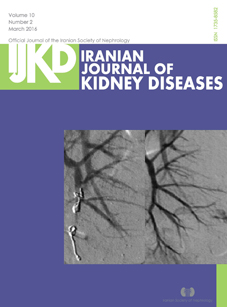National Profiles of Urinary Calculi: a Comparison Between Developing and Developed Worlds
Abstract
Introduction. The incidence of urolithiasis has increased in both the developed and the developing countries during the past decades. Economically, the increase of urolithiasis contributes to the rise of the healthcare burden everywhere. Moreover, this increase has been associated with a change in the epidemiology of urolithiasis in terms of age and sex distribution, and also the location and type of calculi.
Materials and Methods. We searched the MEDLINE for relevant literature dating back to 1980. This review compared the trends in epidemiological factors affecting urolithiasis in the developed and the developing countries during the past decades.
Results. People in the developing countries are more likely to contract kidney calculi at a younger age than in the developed countries. Although calculus disease is still more prevalent in men than in women, the latter are increasingly affected in both worlds. Uric acid calculi are more prevalent in the developing than in industrialized countries. There is a progressive increase in the frequency of calcium oxalate and calcium phosphate calculi in the developing countries where these used to be less frequent.
Conclusions. The incidence and prevalence of urinary calculi is increasing globally. Many factors including aging of the population, changes in diet, global warming, and employment of more accurate diagnostic tools seem to be involved in this increase. An increasing affluence and adaptation of Western diet habits in many developing countries seem likely to contribute to the changes.


